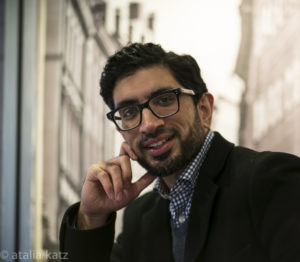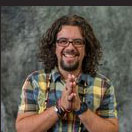student learning
Select an item by clicking its checkbox
These days, Islam is no stranger to controversy. Although we may deplore the mainstream media’s deliberate sensationalization of Muslim conflicts, as professors we can also exploit conflict in the classroom to help our students achieve their learning objectives. Many of my colleagues in other departments use debates as a ...
At the heart of education, the most important “instrument” of our lives, the house we inhabit, is the very core of our selves: our bodies. Fully! It is in and through our bodies that we learn and are able to unlearn. The immense diversity of our bodies, their shapes, formats, ...

Discussion in the College Classroom: Getting Your Students Engaged and Participating in Person and Online
Date Reviewed: April 15, 2016
A single-frame cartoon rests on the upper right-hand corner of my university office door. A professor stands before a full room of students; the board behind her is full of lecture material, most likely a quantum mechanics equation based on the arrows and lines. She is smiling from ear to ear having finished, saying to herself, “That was a great lecture.” Across from her sit her students. They are wide-eyed and, collectively saying to themselves, “I am so confused!” The caption underneath declares it all: “Great Moments in Teaching.” I can hear the collective groaning even as I type.
I would like to think that I am becoming a good professor. Not just a good professor, but an effective professor, one who is shaping the minds of future leaders. Many professors would like to think that of themselves. That is why many are in the noble profession of education. The question is, then, are teachers effective in the classroom?
Jay Howard’s Discussion in the College Classroom opened my academic eyes to be sensitive to teaching better. I had fallen into the trap similar to that of the professor in the comic – I assumed that because there were no questions the students had listened to and processed everything that I had said. Howard calls this “civil attention,” something that the author claims has become common in college classrooms across the country.
According to Howard, the current generation of college students are good students who want to show respect to their faculty members. They do this by quietly checking their Twitter feed, reading the latest Reddit forum, or watching a Vine post from one of their friends. They will laugh in the right places, answer the patented questions correctly and perform well on our rubric-based tests not necessarily because we are the sensational sages that we think we are but because they have learned how to beat the system at its own game – civility receives an “A.”
Howard has an antidote for this type of dilemma – figure out your students, how they learn and process information, and then guide them in discussions in ways with which they can effectively engage. As many writers have mentioned, teachers need to become partners in the educational journey. The difference with Howard is that he has mounds of data to back up this assertion. What the book lacks is practical application for contemporary classroom contexts (only the final chapter offers any actual advice on bettering a teacher’s discussion abilities).
I remember how dumbfounded I was the first time a student told me he had grown up believing Catholics were not Christian. He had never, moreover, heard of the Orthodox Church, the only form of Christianity recognized by most Muslims in the region I study, (Central Asia). This encounter proved ...

It Works for Me, Flipping the Classroom: Shared Tips for Effective Teaching
Date Reviewed: March 14, 2016
The pedagogical landscape of education has recently experienced a tectonic shift in terms of professional development. Once in the field, teachers seeking improvement and new ideas as to how to improve their craft, like so many professionals, used to wait for top-notch scholars to produce new research-based, paradigm-changing tomes. The thinking was that those in the trenches, those who filled kindergarten classrooms and chemistry labs across the country, were not creative enough to provide cutting-edge educational discoveries; only those who labored for a doctorate and took to the ivory towers of academia were capable of such exploration. Sadly, by the time these game-changing discoveries trickled down to the huddled masses in the faculty workroom, these ideas had already been discovered by accident and had been shared among the other faculty on the quad. Teacher’s in-service did not focus on the next great discovery but on how to share the discovery with fellow teachers.
As this new wave of creative teachers began filling the gaps in higher education after proving themselves as master teachers and scholars in this area or that (and with the advent of social media), the focus kept evolving: for example, how can this idea, discovered in a chemistry classroom, be applied to the theology, composition, or social work classroom? Thankfully, Hal Blythe, Charlie Sweet, and Russell Carpenter, all writing professors at Eastern Kentucky University, have made it their mission to improve teacher effectiveness across the nation, first with their Noel Studio for Academic Creativity and now with their It Works for Me book series.
In this volume, as in the previous seven volumes, Blythe, Sweet, and now Carpenter, have assembled a cadre of interdisciplinary scholars from across the country to engage in a conversation about what these teachers and administrators have found in their efforts to “flip” the classroom in an attempt to improve student learning and retention. The authors selected for this volume exhibited good ideas and were invited to share those ideas with others. Generosity, author and speaker Michael Hyatt would say, has become the new currency in learning, leadership, and life.
This volume is divided into seven sections and includes an introduction and take-away-style conclusion. The sections this reviewer found of note were the opening where the flipped classroom is defined (all instructional content is found outside the classroom and classroom time is used for conversations, processing, and reflection), the sections on in-class and out-of-class assignments, and assessment. Each larger section opens with a short introduction from the editors, which is followed by a number of short essays from the contributing authors where each author or team of authors discusses their experiment with flipping the classroom. References, where applicable, have been provided. The concluding take-away section offers twenty ideas, such as never spending more than fifteen minutes on any activity, using Bloom’s taxonomy when crafting course components, engaging other faculty to get feedback on flipped assignments or course structure, and developing your own competency in technology.
Overall, this is an incredibly helpful volume. Its strength is in sharing ideas that might inspire a new way of doing one assignment or offering one lecture that might increase student learning and retention. In that way, it works!


